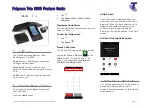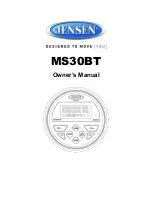
HiPath 3000/5000 in the LAN Network
Nur für den internen Gebrauch
A31003-H3590-S100-7-7620, 06/2012
13-50
HiPath 3000/5000 V9, Service documentation
h3h5_in_the_lan.fm
HG 1500 Board
On layer 2 (in accordance with OSI, Ethernet), you can activate an extension (IEEE802.1p) to
the standard Ethernet format (DIX V2). This adds more information to the Ethernet header in-
cluding a 3-bit data field. This field carries priority information on the data packet. For all pack-
ets that reach the board from the LAN, both Ethernet formats (IEEE 802.1p and DIX V2) are
understood; for all packets that are sent from the board to the LAN, the format can be selected
via “Basic Settings > IEEE 802.1p”. You should check whether all components in the network
support this format before this parameter is activated. Otherwise, it may not be possible to ac-
cess HG 1500 from the LAN anymore.
The Ethernet header is not transported when switching to another transport medium (for exam-
ple, ISDN). An IP router (like the HG 1500‘s router) can, however, use the information contained
in the IP header for prioritization. Straightforward IP routers that connect two network seg-
ments, for example, can use the IP level prioritization. In the “Type of Service” field, either three
bit (IP precedence based on RFC 791, older standard) or six bit (Differentiated Services or Diff-
Serv, based on RFC 2474) are evaluated for the creation of various classes. HG 1500‘s IP rout-
er provides various bandwidths for these classes, so that voice packets can be processed first.
The procedure adopted by HG 1500 can be set under “Basic settings > QoS procedures” (Au-
todetect is set by default).
For the DiffServ parameter, various so-called codepoints (“Basic Settings > AF/EF Code-
points”) are defined, and based on these codepoints two different procedures are used for pro-
cessing the payload of different marked data flows:
The “Expedited Forwarded (EF)” procedure (based on RFC 2598) guarantees a constant band-
width for data in this class. If this defined value is reached, all packets that exceed this band-
width are rejected. A separate class is defined for EF on HG 1500. For this class, the bandwidth
can be defined as a percentage for every ISDN peer (QoS bandwidth for EF).
The “Assured Forwarding (AF)” procedure (based on RFC 2597) guarantees a minimum band-
width for the data of one (of many) classes. Lower priority classes share the bandwidth not
used by EF or the classes with higher priority. In addition, the speed at which packets are re-
jected if the system is unable to forward them fast enough can be defined for every class by
means of the Dropping Level setting. Nothing is thus to be gained by buffering voice packages
for an extended period of time (this only increases the delay). In the case of secure data trans-
fer (for example, file transfer), on the other hand, a large buffer is advantageous as packets are
otherwise sent repeatedly between the two terminals.
Four classes are reserved for AF on the HG 1500: AF1x (high priority), AF2x, AF3x and AF4x
(low priority), where “x” stands for one of three dropping levels: low (1), medium (2) and high
(3). In the case of “low”, packets are buffered over an extended period, in the case of “high”,
packets are promptly rejected if they cannot be forwarded. Unmarked IP packets (ToS field=00)
are handled in the same way as the lowest priority.
If a routing partner can only work with one of the two standards (DiffServ or IP precedence, for
example an older router that only works with IP precedence), then HG 1500 can translate the
ToS field accordingly. This can be set for each ISDN partner or DSL/LAN2/PPTP interface via
Содержание HiPath 3000 Series
Страница 1252: ......
















































